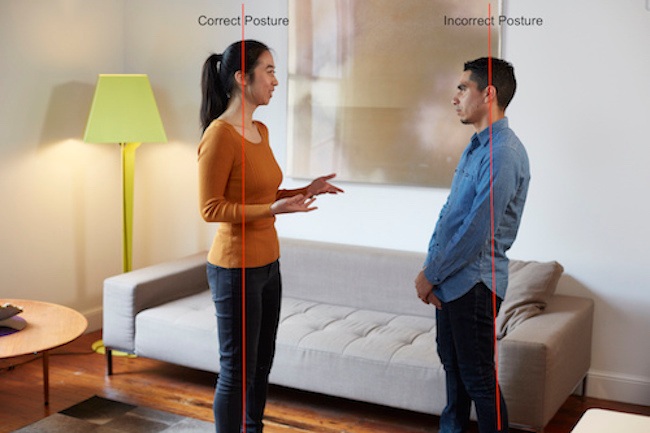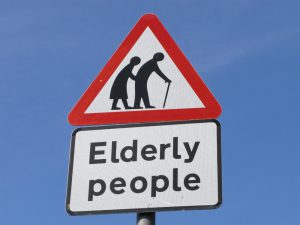Do you think your back pain is normal? Think again.

Do you believe that your back pain is normal? That the pain you feel when you get out of bed in the morning is just a sign of aging? Or that your pain while sitting is caused by sitting itself?
If so, you’re wrong, but you’re not alone.
I was reminded of this when I read the results of a back-pain survey commissioned by San Francisco based software developer Brightday. The number of people surveyed was small (317), but the results were suggestive.
For instance, 90 per cent reported back or neck pain and 68 percent had a monthly budget to cover painkillers, chiropractors, massage therapists and other treatments. Thirty-two percent identified “working at a desk” as the cause of their pain.
And here’s the kicker: 70 percent of those with back pain think it’s “normal” for them to feel that way.
Brightday’s founders, Jens-Peter Jungclaussen, Jim Morris and Richard Gray, commissioned the survey to help promote the posture app they’ve been developing. My teacher, Jean Couch, is their posture adviser (a service she also performs for Google, Kaiser Permanente, and Stanford University).
When you first use the app, you see tutorials that teach you how to sit well. Then you set your desired posture in the program. Every time you deviate, by slumping, leaning backwards or forwards, or lifting your chest, a small red window pops up. To make it go away, you adjust your sitting position until it matches the posture you set at the beginning. No braces, no gadgets: just an artificial intelligence program that uses your computer’s camera to nudge you into better sitting habits.
A Sacramento morning TV program tested the software for a week, and gave it a thumbs-up. (Full disclosure: I was given a copy of Brightday and I’ve used it and like it. I am not an affiliate and will not earn money if you buy it.) I hope that Brightday takes off, and that huge numbers of people who sit to work can learn to relax as they sit.
But somehow, I can’t let go of that 70 percent of respondents who thought their back pain was “normal.”
Humans are an adaptable species. In fact, adaptability is our trump card. We can get used to almost anything – although not without a cost. Back and neck pain can lead to depression, for one thing, and if it’s ignored long enough, to serious damage in the form of slipped discs and degenerative disc disease.
So why, in every category except weight loss – for which we will make strenuous efforts and collectively shell out more than 60 billion per year- do we give up and decide that our discomfort is “normal”?

Here are some reasons:
- Many of us have an outdated idea of what aging entails, and so we accept pain as part of the aging process when it isn’t necessarily so. And our beliefs about age can do much more damage than that. In fact, holding negative stereotypes can increase our chances of developing Alzheimer’s disease.
- We believe that heredity accounts for our posture. It’s true we learn posture from our parents, and if we stand and sit the way they did, our bones will take on the same shape as theirs. But bones are held in place by muscles and tendons, and if we change how we habitually sit and stand, our bones will change their shape. The dowager’s hump is not genetics, or destiny or fate. It’s just a result of misaligned posture, and it can go as it came, slowly, and over time.
- We blame sitting, widely vilified as “the new smoking” for our woes and point out that since we must sit to work, back pain is normal. But here’s a suggestive finding: a study of a modern group of hunter-gatherers, the Hadza of Tanzania, found that while they get much more physical exercise than most North Americans do, they actually sit just about the same amount of time, an average of 10 hours a day, compared to our nine to 13 hours, and they do so without back pain.
People have, after all, been sitting down for as long as we’ve been standing up. It’s how we rest when we don’t want to sleep. Surely our bodies, designed through eons of evolution to be as efficient as possible, can handle sitting, provided we sit well.
I get a lot of joy from my work. I don’t know of much that’s more rewarding than relieving someone’s pain with two simple adjustments: sit with your buttocks behind you, not under you, and relax your front chest downwards.
The equal and opposite heartbreak is in seeing people with rigidly held bodies, leaning backwards as they stand, who can’t conceive of being able to change.
Suffering is normal. In the most blessed life, there is always loss, and eventually death. But there is such a thing as unnecessary suffering.
As BKS Iyengar famously said: “Yoga teaches us to cure what need not be endured and endure what cannot be cured.”
The tricky part, of course, is knowing the difference.
Back pain caused by faulty posture can be cured. So why endure it?